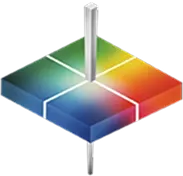
Is this banana yellow, or Nilla Wafer yellow? A spectrophotometer could tell. Image Credit: Flickr User: Travis Ekmark. (CC BY 2.0)
You have three hundred air conditioner housings in storage containers in the yard. “Sorry, we can’t take them,” says the client rep. “I personally feel like gray is gray, but I have to do things by the book. I know it’s a pain to rework, but the units have to meet specifications in order for me to accept them. Can you take care of it? Thanks.” She drives away, tires kicking rocks and dust, and there are still three hundred housings in the yard. Fishing your phone from your pocket, you dial. “Bill? We’re gonna need to do some rearranging.”
Not all purchasers of powder coated products are so picky about their colors; many clients are happy to choose from pre-mixed options or generic swatches. As a result, spectrophotometric analysis as a method of color quality control has not yet saturated the market. But for owners and operators of powder coating lines who are looking for a competitive edge, spectrophotometry represents a way to stand out while expanding your operations.
Color Precision Provides Opportunities for Powder Coating Lines
If you hope to take on clients with rigorous color quality control standards, spectrophotometric analysis is already essential since without this capability, you’ll be unable to compete for bids.1
And since powder coating is now being chosen over traditional liquid VOC paint due to its economic, environmental, mechanical, safety, and efficiency advantages,2 we’re seeing more and more applications that once used liquid paint beginning convert—including applications for a number of designer and specialty products. Companies like Austrian furniture designer Finima3 have already made the switch to powder coating, and winning bids for similar high-end applications will require you to have delicate control over product color—as well as the ability to offer unique color configurations.



